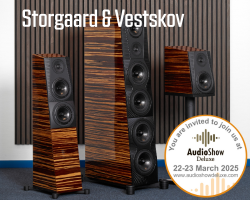OPHIDIAN FFION LOUDSPEAKERS REVIEW
Ophidian Ffion Loudspeakers are relatively compact floorstanding speakers costing £8500 that combine an interestingly shaped cabinet with an equally interesting driver layout, with the 8″ sub driver housed in the cabinet base. Ian Ringstead takes a listen for HiFi PiG.

This review took several months to come to fruition for various reasons but began at the Northwest Audio Show at Cranage last June. I’m no stranger to Gareth James’ brand and his company Ophidian Audio and he had pre-warned me beforehand that he was launching a new model and that it was named after his recently born daughter Ffion. The Welsh feminine name Ffion means “foxglove”. In Welsh folklore, the foxglove flower is associated with both magical and medicinal properties. The flower is also known as “witch’s gloves” or “goblin gloves”. Gareth has Welsh heritage, so the naming makes perfect sense.


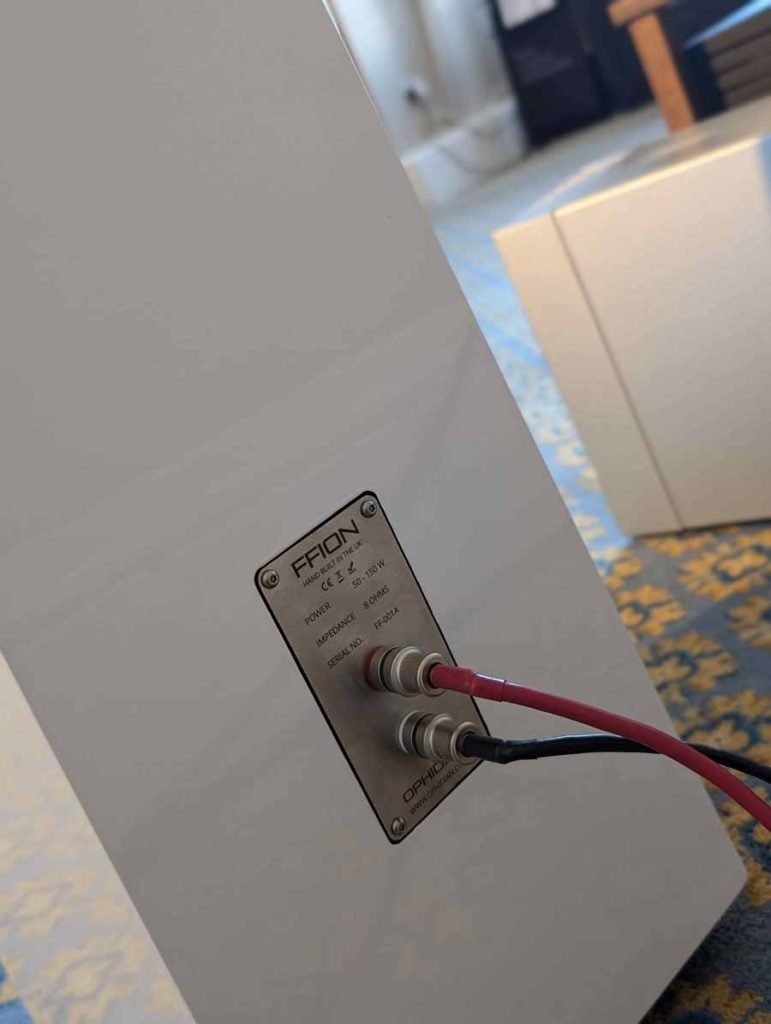
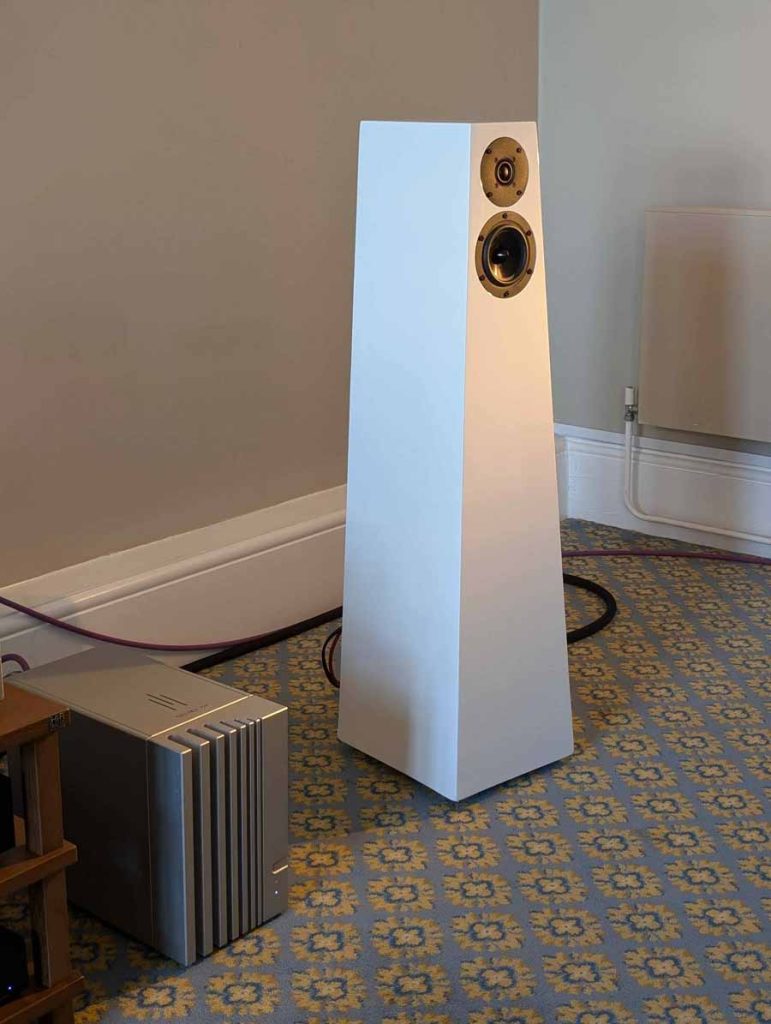
BUILD QUALITY AND FEATURES
The Ffion’s cabinet is a big departure from Gareth’s previous straight-sided, conventional oblong boxes that we have all come to know. Striking is the word I would use because at first sight I immediately thought of a truncated obelisk such as Cleopatra’s needle in London which I find to be very elegant.

The Ffion stands one metre tall and is wider at its base, tapering gracefully as the cabinet rises to its flattened narrower top. The sturdy 18mm thick HDF cabinet walls are angled so they are hardly parallel to one another. The front baffle slopes back to allow time-alignment of the mid and treble units and the 8” bass unit is downward firing making the sturdy floor spikes essential for correct performance. Gareth still uses his Aeroflex bass technology seen on his other designs, allowing the powerful bass driver to breathe freely and produce room-filling, accurate and dynamic low frequencies whether you’re listening at low or high volumes – I can attest to this method being supremely effective. A very large rear port system extends all the vertical height of the cabinet, producing a system free from chuffing and distortion and increasing dynamic performance substantially. It’s a bold claim and but works superbly.

I placed the Ffion’s on two granite chopping boards atop my solid oak flooring – this was both a practical application and a great cheaper alternative to the isolation products available.
The soft dome tweeter is a 22mm Sonomex design providing a sweet and detailed top end for a tireless result. The 125m (5″) mid-bass driver features an aluminium cone with a solid alloy phase plug and a motor system with twin shorting paths for very low distortion. Gareth has cleverly incorporated the mid and tweeter units into their own isolated enclosure so the bass unit cannot have any influence on them. The Ffion’s elegant stance means they fit into a room easily and are deceptively compact due to their shape. My listening room is compact at roughly 3.5 M x 5M, but the Ffions did not dominate.
Gareth has really worked hard on this design and put all his experience into it. A case in point is that the crossover not only uses high-quality Mundorf capacitors known for excellent results, but he has split the crossover into three separate boards dedicated to each drive unit and therefore minimising any interference between them. It’s a nice savvy touch. The binding post inputs are from world leaders WBT and feature conductors made of high purity copper, plated in 24-carat gold with a chromium finish. Air-cored coils, ultra-low distortion capacitors, and non-inductive metal oxide resistors ensure each driver can deliver its absolute maximum performance.
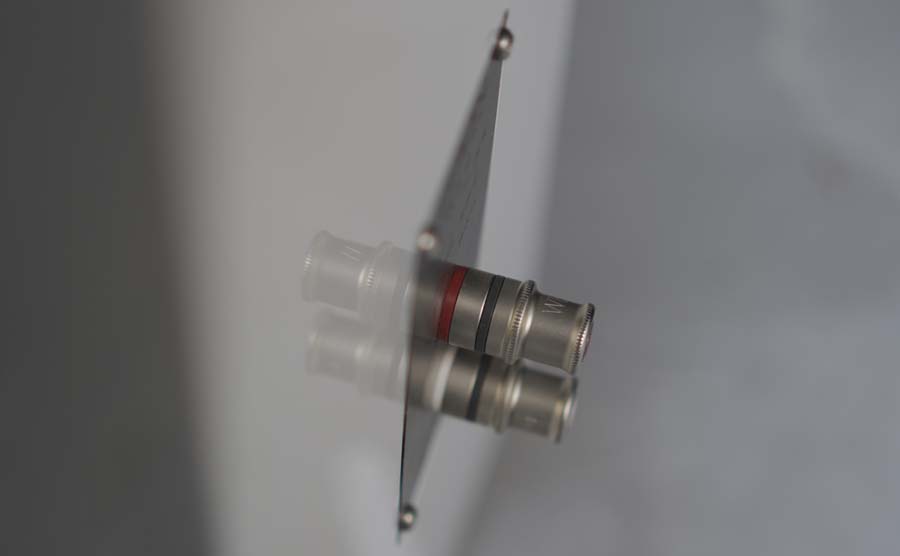
The demonstration pair were in gloss white, but any RAL paint finish can be ordered and even walnut veneer if you want to go for the more traditional look. I like wood finishes, but the RAL paint finishes are increasingly becoming popular to suit all tastes and home decors. Gareth told me that the price wouldn’t increase for the paint options which is encouraging as some companies tend to add quite a premium if alternative colours are requested.
The pair I heard at the North West Audoi Show were prototypes that Gareth felt were possibly ready to be launched and he asked my opinion of them at the show to which I said they may need some tweaking. As I wasn’t familiar with the electronics being used and the hotel room sounded boomy to my ears he said why not try them at home and report back? That’s what I did. Back home in my familiar listening room it didn’t take long to decide that although the Ffion’s were good the bass was not perfect and the overall presentation was forward. They went back to Gareth for modification, and it took several weeks before I got them back again in their ready-for-market guise.
SOUND QUALITY
I used a variety of amplifiers to drive the Ffion’s including Moor Amps Angel 4 power amp and preamp also in for review at the time, my Denon PMA A-110 integrated and a recently acquired Musical Fidelity Dr Thomas power amp and matching The Preamp. All units drove the Ffion’s admirably, and the differences between amps were plain to hear.
Whatever Gareth did to modify the Ffion’s crossovers it certainly did the trick like. The previous bass bloom on certain tracks had disappeared and the upfront balance had vanished. Now we had a beautifully balanced sound that was easy on the ear, making long listening sessions a pleasure. When any of the amplifiers used had warmed up, the sound field would reach out into the room with greater depth for that 3D aspect all good systems should possess. Kraftwerk are well known for their albums’ ability to showcase electronic synthesised soundscapes which Kraftwerk developed as a self-described “robot pop” style that combined electronic music with pop melodies, sparse arrangements, and repetitive rhythms. The “Robots” was just one example which worked so well on the Ffion’s with the sound panning between each channel – simple but effective.
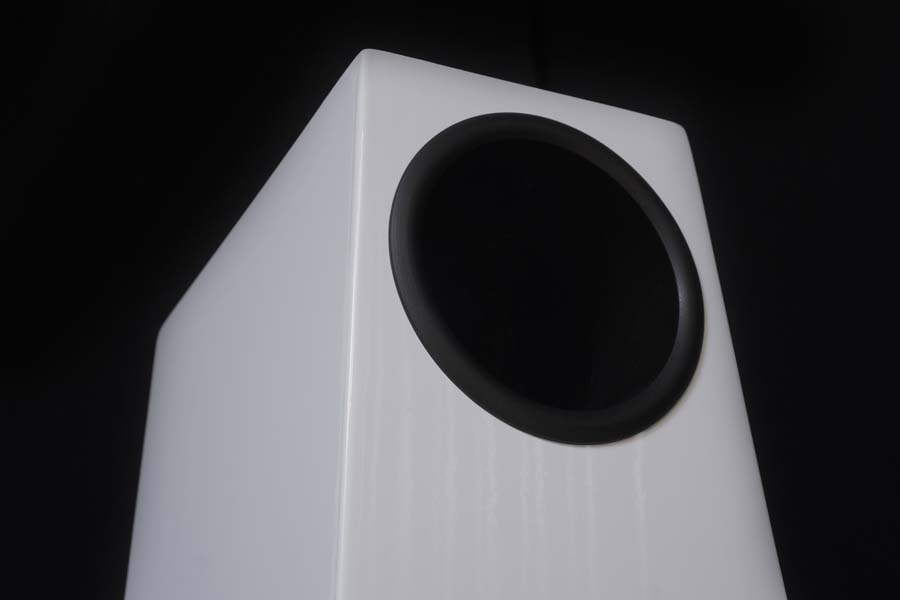
An old classic, Mike Oldfields “Tubular Bells” was played not just because it’s such a well-known album but because it is timeless and has a huge variety of instruments on it (twenty in all, many played by Oldfield). The haunting piano at the beginning of the piece sets the mood quickly followed by bells, glockenspiel, bass, guitar effects and so on. The Ffions easily picked out the interplay and placed each instrument in their own space suspended in the sound stage making the whole experience a real pleasure. I spent the whole album mesmerised by the music, not trying to analyse in micro detail that was clearly evident. This point is important as it’s my belief that you shouldn’t have to work at listening to music as it’s an emotional response stimulating your brain and inner soul. The Ffion’s had this ability to sound just so right and with no harshness or edge to spoil the show. You would argue, but surely shouldn’t any good system do that? Many systems on paper should theoretically do that when measured scientifically, but speaker design is not an exact science and requires great skill and patience from the designer.
Using some contemporary music, I put on Christine and the Queens album “Chris” from 2018. I like her quirky style and presentation mixed with her imaginative dance routines. The song “Goya Soda” is a reflection on the feeling of growing and maturing, and how it can be difficult to navigate through unfamiliar and unknown experiences and emotions. The studio mix is airy, and the opening has a great reverberant synth bass line that the Ffion’s lapped up, reaching low and activating the air in my listening room with a tight and accurate portrayal – there was no out-of-control boomy bass here. The track remains uncomplicated, simple and to the point.

Dutch band Haevn are a recent discovery and my wife and I saw them in London promoting their new album “Wide Awake “. I got the limited-edition vinyl album signed by them and so had to play it. I’m sure when people hear their music many will dismiss it as pleasant, easy-listening background music. I disagree, especially when you see them live. The Ffion’s showed how accomplished they are as musicians as well as the delicacy of the string arrangements. The music floated beautifully in front of me and moved me emotionally – isn’t that what music should be about? The productions are lush and they were recorded in a large studio in Amsterdam. The results are evident with the Ffion’s highlighting the background of the two founding members as film soundtrack composer and singer-songwriter.
Talking of film soundtracks, I put my trusty CD of the brilliant film Gladiator to work. The soundtrack was composed by Hans Zimmer and Lisa Gerrard and was released on April 25, 2000. It was conducted by Gavin Greenaway and performed by the Lyndhurst Orchestra. That makes me feel old, but it is a timeless stirring film score. Speakers like the Ffions relish the challenge and they came up trumps. Dynamic range is superb and catches you out if you are unfamiliar with the music, but the Ffion’s responded like a feisty sports car eager to please as you put the pedal to the metal. The film is an emotional rollercoaster of ebullience and sorrow which the music conveys through the effortless response of a full orchestra in a studio or live auditorium. The Ffions convey supreme delicacy on tracks like “Earth” and “The Emperor is Dead” which wash over your senses to calm you and then “The Battle” with the Barbarian hoards goes full steam ahead to shock you. The weight and heft of the Ffions is testament to Gareth’s ability to control any resonances in the cabinet design and his excellent Aeroflex system which has supreme control and grip in the troublesome bass region that is so hard to conquer. At no point did I feel the bass was out of control in my room if levels were sensible – I don’t like it too loud these days anyway and it’s a pet hate at live concerts or HiFi shows if the level is too high.
Audioslave’s first album “Audioslave” and the opening track “Cochise” clears the cobwebs as it assaults your senses. Polite systems baulk at its raucous nature, but the Ffions run with it as the pace ramps up and explodes. It’s a dense mix not easy to unravel, especially as the guitars and bass pile on the volume and pace, Chris Cornell’s raucous vocals attack your ears and how he keeps singing throughout is a minor miracle. The music is exciting and visceral which the Ffions easily convey in all its glory and the chugging bass and drums are the solid foundation planted firmly to drive the track along. My wife and I request this track quite often at shows to get a feel for a system’s ability. Not all succeed but the Ffions did so and dod so with aplomb.
QUIBBLES
None I could hear. Their price at £8500 I think is very fair for what they offer in today’s very crowded and competitive speaker market.
CONCLUSION
What’s not to love? The Ffions answer a lot of enthusiasts’ wishes; elegant, versatile and not too fussy about room placement. They blend in easily producing a controlled, confident sound that is tireless but palpable in its spaciousness and dynamic grip.
This is a superb design based on years of experience and talent that has enabled Gareth to hit a home run. He wanted to be far-reaching with this new model to capture people’s imaginations and break the traditional approach. Already I know a dealer who has ordered his demo pair and claimed the Ffion’s to be his current favourite speaker design.
Ophidian and Gareth James deserve to do well with the Ffions.
AT A GLANCE
Build Quality and Features:
Excellent build quality based on high-quality components and skilful implementation
Sound Quality:
Outstanding at this price point and well worth seeking a dealer out to audition
Value For Money:
Superb value. I say this because having heard countless speakers over the years and they fulfil many wishes I value, even at £8500. If you can stretch your budget give them a try
We Loved:
Easy to position and unfussy
Single wired
Superb quality sound
Elegant looks which can be in any RAL colour you so desire
We Didn’t Love So Much:
The only downside for me was which colour would I choose?
Elevator Pitch Review: The Ffions don’t need a large room in which to excel and are very forgiving. They’re not a budget product, but aimed at serious music lovers with the funds to build a great system that will last a lifetime. Choose your electronics carefully and audition at home if possible, for a guaranteed result.
Ian Ringstead
SUPPLIED SPECIFICATIONS
• 200mm (8″) down-firing woofer in base
• 125mm (5″) alloy mid-bass driver
• 22mm soft dome tweeter
• AEROFLEX bass system
• Mundorf crossover components
• WBT chromium finished binding posts
• Custom lacquer paint available in any RAL colour
• Detachable magnetic protective grilles
• Frequency response – 32hz to 25khz (-3dB)
• Sensitivity – 87dB (2.83v)
• Recommended power – 50 to 200 watts
• Impedance – 6 ohms
• Dimensions – 1020mm H x 264mm W x 300mm D (exc. spikes)
• Weight – 20kg





























































































































